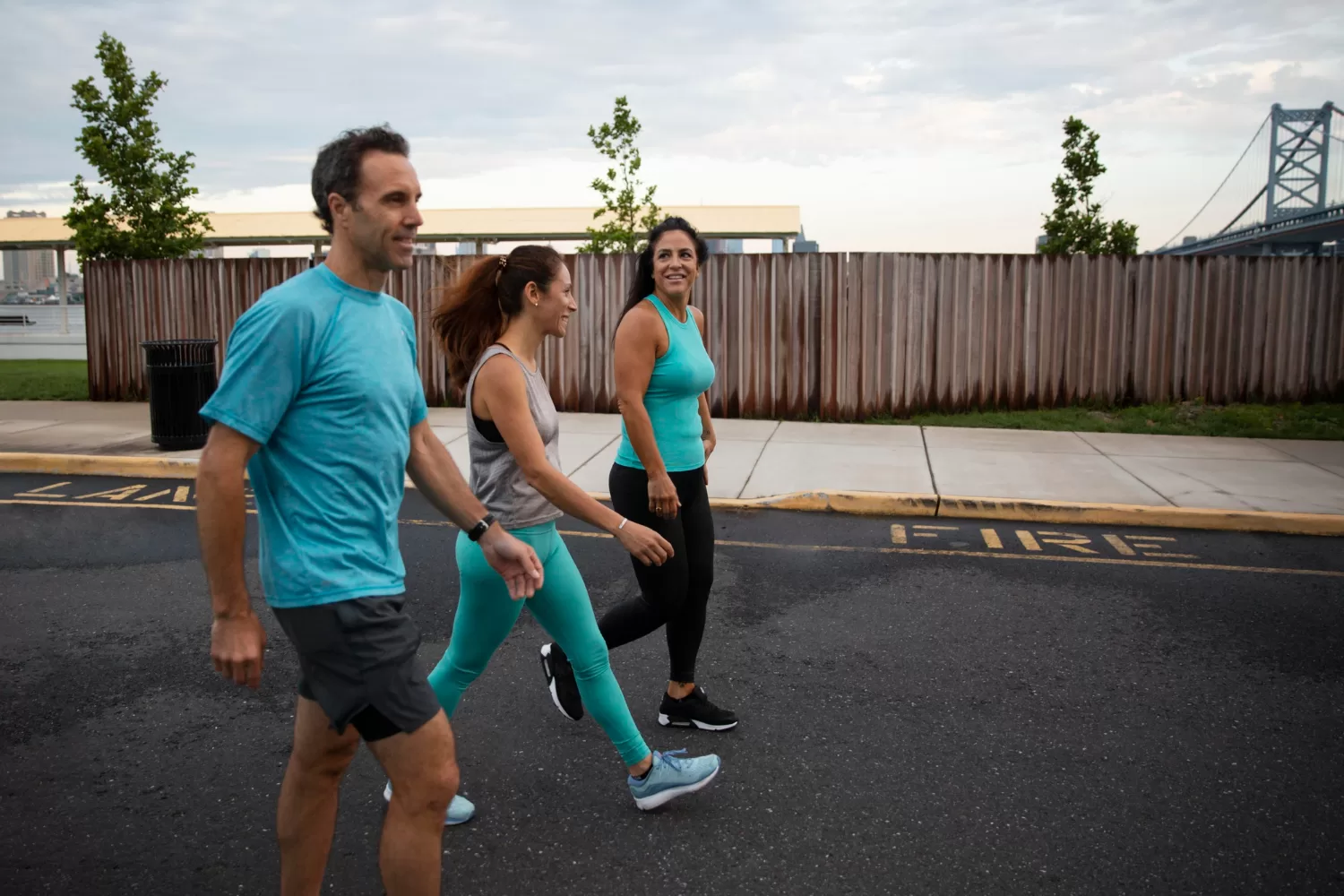
Walking Wonders: A Comprehensive Guide to Physical and Mental Well-being
In the hustle and bustle of modern life, amidst the clamor of high-intensity workouts and fitness trends, one timeless activity often gets overlooked – walking. This simple, age-old practice, often dismissed as basic, holds a trove of unexpected benefits for both body and mind. Let’s explore the surprising advantages of walking, delve into the hows and whens, and decipher the golden question: just how much do you need to walk?
The Underestimated Perks of Walking:
While many recognize walking’s health benefits, its full extent may pleasantly surprise. Beyond expected cardiovascular and weight management perks, brisk walking counteracts obesity-promoting genes, slashes breast cancer risk, eases joint pain, and even curbs sweet cravings.
Counteracting Obesity-Promoting Genes: Regular brisk walking slashes the effects of obesity-promoting genes by half, creating a genetic shield against unwanted weight gain.
Reducing Breast Cancer Risk: Women walking seven or more hours weekly exhibit a remarkable 14% lower risk of developing breast cancer.
Easing Joint Pain: Numerous studies confirm walking’s efficacy in alleviating arthritis-related pain, offering a natural remedy for enhanced joint health and mobility.
Curbing Sweet Cravings: Surprisingly, a mere 15-minute walk proves effective in curbing chocolate cravings and reducing sugary snack consumption during stressful situations.
Boosted Mood and Creativity: The simple act of walking emerges as a powerful mood enhancer, with research indicating enhanced creativity and cognitive function. Stepping outside for a walk unlocks the mind’s potential, especially during mental blocks or low moments.
Improved Digestion: Believe it or not, walking aids digestion. A post-meal walk, even a gentle one, stimulates digestion and regulates blood sugar levels, supporting a healthier gut.
Stress Reduction and Mental Clarity: Walking serves as a natural stress reliever. The rhythmic movement and fresh air release endorphins, promoting relaxation and clearing the mind for enhanced mental clarity and focus.
Stronger Social Connections: Beyond a solitary activity, walking becomes an excellent opportunity for social interaction. Walking with friends or family fosters stronger bonds, providing a chance to connect, share, and enjoy each other’s company.
Enhanced Sleep Quality: Walking has a tranquilizing effect on the mind, serving as an unexpected remedy for improved sleep. A regular walking routine contributes to better sleep quality, aiding relaxation after a hectic day.
How to Walk Right:
Walking might seem like a no-brainer, but turning it into a health-boosting activity requires some attention. Maintain good posture – head up, shoulders relaxed, arms swinging naturally. Engage your stomach muscles and ensure a smooth, heel-to-toe rolling motion. It’s not just a stroll; it’s purposeful movement that maximizes the benefits.
The Right Time to Walk:
The beauty of walking lies in its flexibility. Whether you’re an early riser or a night owl, finding the optimal time for your walks is key. Morning walks can invigorate, kickstarting your day, while evening strolls offer a calming way to unwind. Make it work for you and your schedule.
How Much to Stride For:
The burning question – how much is enough? The magic number, according to health guidelines, is at least 150 minutes of moderate aerobic activity per week. This could be a daily 30-minute walk, and the best part is, you can break it down into shorter sessions if time is tight. Even small bursts of activity throughout the day count and contribute to your overall health.
Tips for Incorporating Short Walks:
- Incorporate short walks into your daily routine, especially during breaks or when facing mental challenges.
- Aim for a short walk after meals, allowing your body to digest food more efficiently.
- Schedule evening walks to wind down, but avoid vigorous walks close to bedtime.
- Choose scenic routes or green spaces for a more calming walking experience.
- Schedule evening walks to wind down, but avoid vigorous walks close to bedtime.
- Plan regular walks with loved ones, turning exercise into a social affair.
Plan Your Walking Routine:
Before you embark on your walking journey, ensure you’re equipped for success. Invest in proper footwear with good arch support. Dress comfortably, considering the weather, and opt for moisture-wicking fabrics. If you’re the tech-savvy type, use an activity tracker or app to monitor your progress. And remember, safety first – choose well-lit, safe routes, especially if walking in the dark.
Keep It Enjoyable and Stay Motivated:
The key to sustaining a walking routine lies in making it enjoyable. If solo walks aren’t your thing, invite a friend or join a walking group. Vary your routes for added interest, and consider listening to music or podcasts to keep things lively. Start small, set achievable goals, and gradually build up – the journey to better health is a marathon, not a sprint.
In conclusion, the benefits of walking are indeed surprising, extending far beyond the physical. It’s a holistic approach to well-being that anyone can incorporate into their daily routine. So, lace up those shoes, step outside, and discover the wonders a simple walk can unfold for your health and happiness.